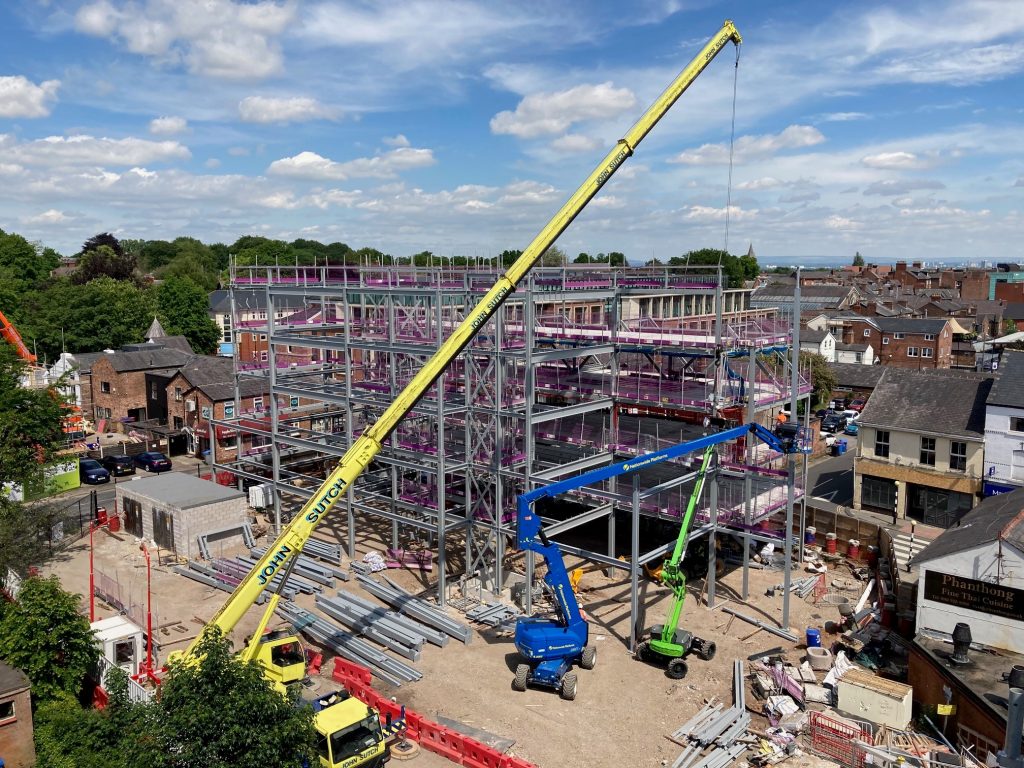Achieving ambitious projects using grillages, bases or mast ties
Tower cranes are used on most large construction projects, standing over developments to lift loads into place.
Their stability and safety is contingent on the design and installation of crane bases, grillages and mast ties. These provide the stable footing for tower cranes or mobile elevating work platforms (MEWPs) to stand on. Depending on a project’s limitations – or ambitions – these temporary works can be used for cranes to be tied into structures or placed onto towers, piles or even over tunnels.
While the cranes themselves are likely to be supplied externally, the temporary structures on which they stand are the responsibility of the client or main contractor. The structure must be able to support the loading of the crane, both while in use and when out of service.
This means they must be factored into the design process early on, to allow for placement on cores or climbing inside cores. In some cases, the need for crane bases can mean they are incorporated into permanent works.
Crane grillages can be tied into a structure to support the primary tower crane, dispersing loading to ensure safety. They are particularly useful for projects where locations are too congested for a crane to work at the side of a build.
Crane grillages are complex due to both location and loading. Since they are often used in urban areas, where activity and footfall around the site is heavy, and they are moving huge loads, the risks are high.
Having experienced, reliable contractors advising on and delivering such temporary works is essential.
Using crane grillages to deliver a double-height extension
These are methods we employed for the development to double the height of an existing six-storey building in London, sited in the busy Whitechapel area. Using a crane grillage to create a stable foundation for the tower crane allowed us to comfortably move 800 tonnes of structural steel for the project.
Loading was dispersed across the existing reinforced concrete frame as structural steel was lifted and installed into place, adding a new six-storey steel structure to the 1960s building.
The method supported overall buildability of the ambitious project, making a challenging development physically possible and economically viable.
Though the focus of these temporary works is always safety, getting them right will deliver many benefits – from efficient programme timings and cost-effective delivery to achieving the most ambitious of designs.
Get in touch for advice or information to improve the buildability of your projects.

